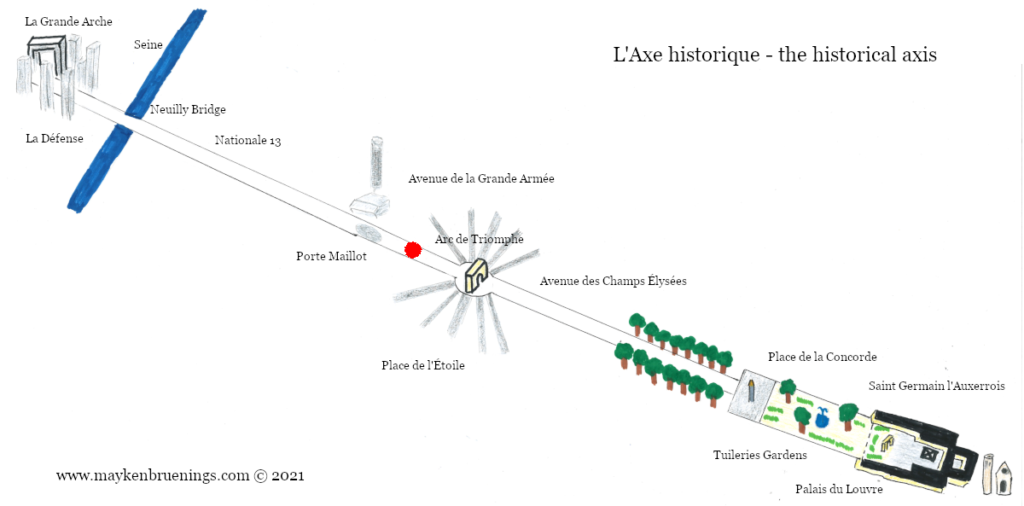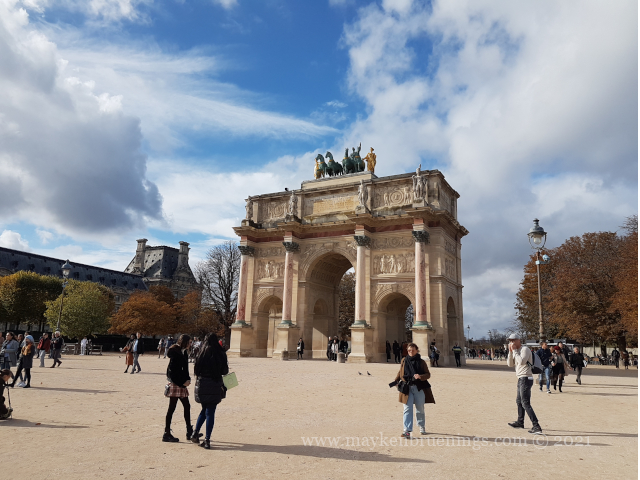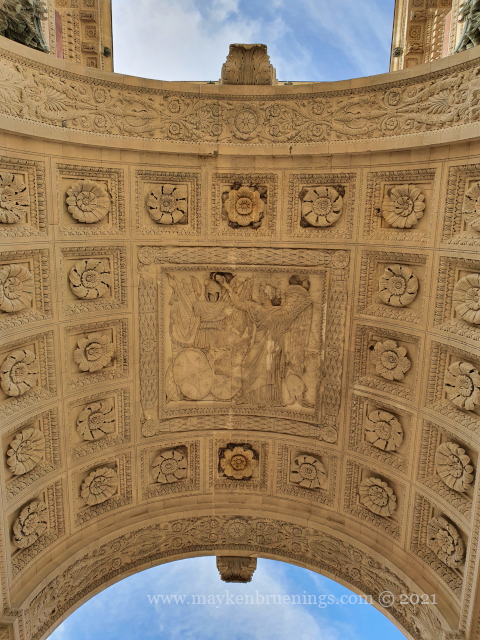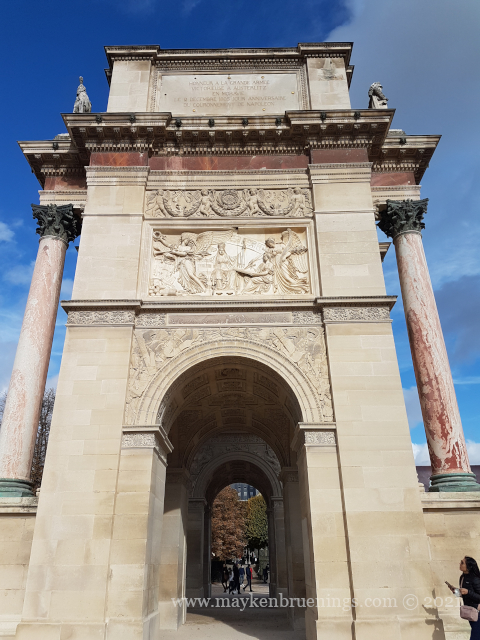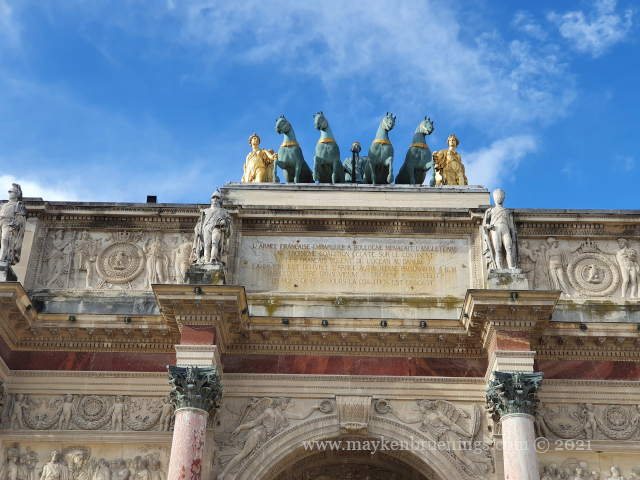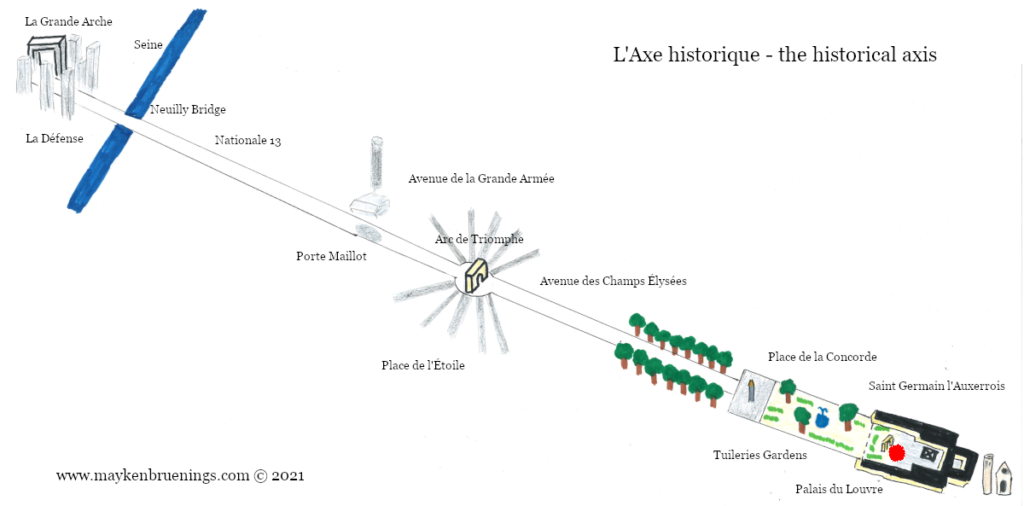This avenue is the continuation of the Champs Élysées and runs from the Place de l’Étoile to Porte Maillot. It is one of the 12 avenues forming the star of the Étoile, and it also constitutes the limit between the 16th and 17th arrondissements.
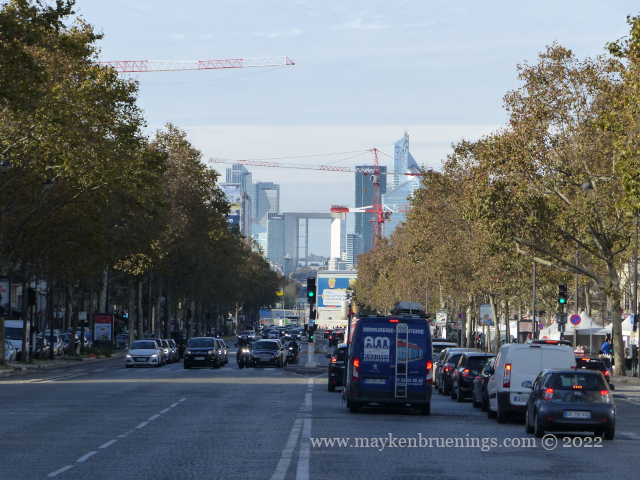
It is named after Napoléon’s Grande Armée (Great Army), the French Imperial army under Emperor Napoléon Ier that participated in all the campaigns of the First Empire (that is, Napoléon’s reign 1804-1814).
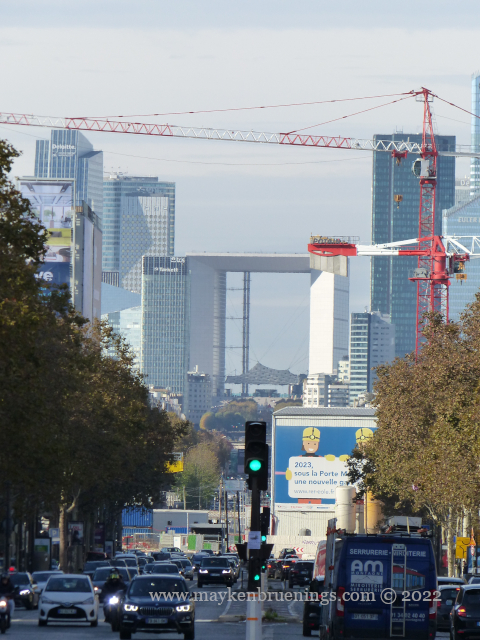
For drivers who’d rather not brave the Place de l’Étoile roundabout, the tunnel de l‘Étoile links the Champs Élysées directly to the Grande Armée.
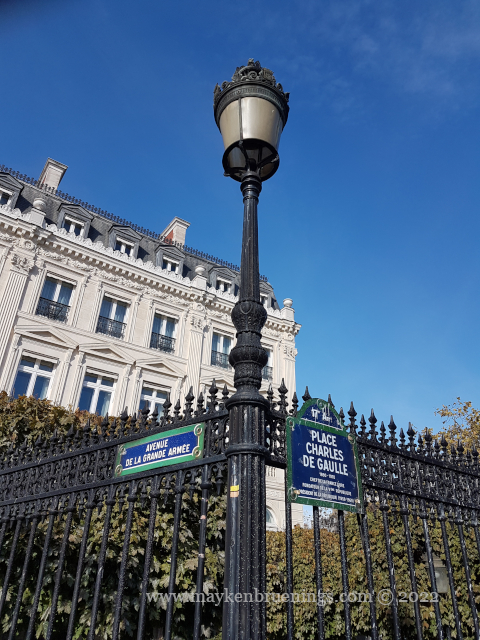
Twice per year, the sun rises in the axis of the avenue (around Feb 7 and Nov 4), and twice a year, it sets in the axis (around May 10 and August 1).
